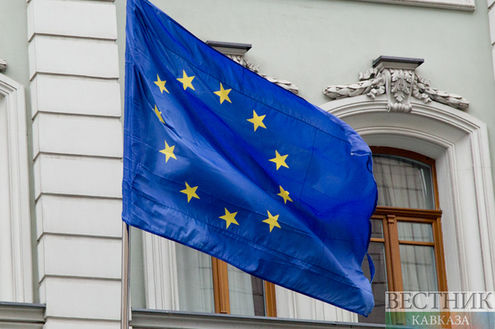When the Second Karabakh War broke out on September 27 last year, the leaders of Armenia and the puppet regime in occupied Karabakh announced that military operations would be conducted until the complete destruction of the enemy - that is, Azerbaijan. These slogans were consistent with the prevailing opinion in the Armenian society that in the event of a resumption of hostilities, Armenian tanks would end up in Baku. They ended up there, but as war trophies of the Azerbaijani army - and the fact that this happened is partly due to the traditions of myth-making, rooted in the Armenian political and intellectual elite.
Armenian myths helped Azerbaijan to win the Second Karabakh War, but the problem remains - the myths continue to penetrate the masses against the background of a deep political and economic crisis in Armenia. These myths have deep historical roots, they do not allow Armenia to leave the parallel world and start developing good-neighborly relations in the region.
Let us remember how the Armenians in Armenia itself and in the diaspora reacted to the events of the Second Karabakh War. They refused to believe the information about territorial losses, and the offensive of the "Azeris", as they pejoratively began to call the people with whom they had lived in peace for centuries, were ridiculed on social networks. And here one should not blame the military censorship of the "democrat" Nikol Pashinyan. If he were a true democrat, he would try to change the ultra-nationalist narrative in Armenian society, and not follow the channel of territorial expansion, referring to the ancient king Tigran II. Diaspora Armenians echoed the tales of the military department. In the age of the Internet, it is easy to check how much the official propaganda corresponds to reality, but the Armenians were indoctrinated with the myth of their invincibility.
Meanwhile, Azerbaijan was slowly but surely returning its lands. Russian military "experts", who were skeptical about the capabilities of the "undisciplined" Azerbaijani army, also made a significant contribution to Armenian mythology. Western experts were also not up to par, saying that Azerbaijan was not successful in the blitzkrieg.
As a result, in 44 days, Azerbaijan practically defeated the Armenian army and liberated a significant part of its occupied territories. Only on November 10, the Armenian society learned that Armenia had lost a significant part of Karabakh - the modern myth-making came at a cost to the Armenian side.
The creation of myths caused damage not only to the Armenian society, but also to the South Caucasus region as a whole. If we discard propaganda and analyze the history of the conflict, then the reasons for the "Armenian tragedy" will be revealed, as the American expert Joshua Kuchera dubbed the current state of Armenian society, which passes off the wishful thinking.
Former adviser to Armenian President Levon Ter-Petrosyan, Zhirayr Liparitan recently noted that the Armenians both in Armenia itself and in the diaspora have created a desired, but far from reality, world. It seemed to them that war was fun. This myth was created by false conclusions about the results of the first war in Karabakh in 1992-1994, when Armenian nationalists managed to occupy not only Nagorno-Karabakh, but also seven regions around it.
The conflict began in autumn 1987 - winter 1988, and Armenian nationalists were well prepared for it. In the first year, they managed to evict the Azerbaijani population from Armenia and transfer all political and military actions to the territory of Azerbaijan. The collapse of the USSR in December 1991 was accompanied by leapfrog and a frequent change of power in Azerbaijan. Against this background, the Armenian armed groups managed to capture Nagorno-Karabakh and seven regions.
In these operations, they were greatly assisted by the former Soviet military - this is not spoken about openly, but now and then the memories of former "veterans" of the war come up. Incidentally, they sometimes provided "assistance" to the Azerbaijani side, as in the summer of 1992, but these were short-term operations. In the winter of 1993-1994, Azerbaijan launched a counterattack and managed to liberate the city of Horadiz, but things did not go further - the former Soviet military intervened on the side of Armenia, and the Russian "peacekeeper and mediator" Vladimir Kazimirov, in private conversations with officials in Azerbaijan, threatened them with the loss of Ganja - the second largest city in the country.
Thus, the success of the Armenian army was due to two factors: the strife in Azerbaijan and the assistance of the former Soviet military, especially from April 1993 to May 1994. It is also worth noting here that in Azerbaijan, failures at the front became public almost immediately (with the exception of the massacre in Khojaly, which, incidentally, cost President Ayaz Mutallibov the presidency / 1991-1992 /).
In general, people in Azerbaijan are still inclined, in my opinion, to excessive self-criticism, despite the existing stereotypes regarding Azerbaijan as a "country without alternative thinking" - this opinion is especially widespread among Western experts. Although it may be, this tradition of a certain nihilism helps Azerbaijanis to realistically assess their capabilities and, ultimately, achieve success.
The propaganda skillfully developed by Armenian nationalists since 1988 to gain support from the Western and Russian political establishment, intellectuals and media representatives has led to a political and military disaster in Armenia itself. The myth of the first Christian state, whose people had been under the yoke of Muslims for centuries and which "qualitatively" surpassed the "wild hordes of Turkic nomads" lulled ordinary people. Meanwhile, field commanders Robert Kocharian and Serzh Sargsyan, who later became presidents of Armenia, profited from the ethnic cleansing of Azerbaijanis, and then plundered Armenia itself.
However, an even greater tragedy for Armenia may happen if its political approach does not change after November 10, 2020. Social networks are full of xenophobic attacks against Azerbaijanis, slogans of revenge are heard in the streets, while politicians who are responsible for the economic stagnation, demographic crisis and military defeat continue to play a significant role in the country's political arena.
Arman Grigoryan, a lecturer at Lehigh University in the United States, notes that national myths dominate the Armenian media so strongly that reasonable voices are practically not heard. One of the enduring myths is the "Armenian question" - the creation of a state within the borders of "Great Armenia". This myth seriously undermines the normal development of the country. It is also significant that the Armenian diaspora abroad also remains a radical force that impedes the normalization of relations between Armenia and Azerbaijan and Turkey.
The history of the "Armenian question" also highlights the role of empires in stirring up ethnic confrontation between Armenians and Turks. At the end of the 19th century, during the heyday of nationalism, when the Armenians, like many other peoples, developed ideas about an independent state, the Western powers began to promote the issue of the Armenian territories in the Ottoman Empire. They in every possible way encouraged centrifugal forces there in order to get their hands on its territory, which ultimately happened. True, after the collapse of the Ottoman Empire, Britain and France forgot about the "Armenian question" for a long time. At the same time, Armenian nationalist organizations pondered the self-determination of Armenians in both the Ottoman and Russian empires. At the beginning of the 19th century, during the offensive in the South Caucasus, the Armenians provided some assistance to the Russian troops. After the seizure of the region, the Russian administration carried out a massive resettlement of Armenians to the territory of modern Armenia - then it was the Erivan Khanate, inhabited mainly by Azerbaijanis. On these lands, the Russians created an Armenian province in 1828, which they liquidated twenty years later, fearing the growth of nationalist sentiments among the Armenians. At the beginning of the 20th century, the Russian administration implemented a series of measures against the Armenian Church and temporarily closed Armenian schools.
A series of tragedies in the late 19th and early 20th centuries left an imprint on the Armenian-Turkish relations. The propaganda of Armenian nationalists, supported by Russian and Western intellectual elites, has created an atmosphere of hatred and completely falsified the history of Armenian-Turkish coexistence. As the Armenian historian Philip Ekozyants notes, the Armenians have perverted and forgotten their 400-year history as part of the Ottoman Empire, where the authorities called them "milleti sadig" - a faithful people. In his words, the Armenian-Turkish relations were a history of joint creation. The fact that Armenians and Azerbaijanis are still arguing about the culinary or musical heritage testifies to the deep interpenetration of cultures. But now the whole history of Armenians is presented in Armenia as a process of survival under the yoke of "genocidal Turks". This myth about age-old oppression, which is especially popular among the Armenian diaspora, is supported by some Russian and Western intellectual circles, depriving, figuratively speaking, Armenia of its geography. This myth has been beneficial in geopolitical games in the Middle East and Caucasus.
Let us recall that when Armenia became an independent state after the collapse of the Russian Empire in 1918, the nationalists, led by the radical Dashnaktsutyun party, unleashed a war with Azerbaijan and Georgia. As a result, all three young republics fell victim to the Bolshevik expansion, and the communists recreated the borders of the former Russian Empire in the Caucasus. The confrontation between the USSR and Turkey (a NATO member) contributed to the fact that the Soviet authorities further fueled anti-Turkish sentiments led by Armenian nationalist historians. Armenian, and after them Western historians like to talk about Stalin's gift to Azerbaijan in the form of "Karabakh autonomy", which, as noted by the Armenian scientist Arsen Saparov, does not correspond to reality. At the same time, Armenian historians keep silent about the fact that Armenia in 1921 received Syunik (or Zangezur), which the Azerbaijanis consider their historical lands.
The success of Armenia in 1988-1994 created another myth - the Republic of Armenia, starting from 1918, recreates the borders of "Great Armenia". The territory of Armenia has been increasing since 1918, and control over Nagorno-Karabakh and the seven occupied territories around it, which were subordinate to Yerevan, about which the European Court of Human Rights ruled, created another myth of successful expansion.
During his tenure as President, Serzh Sargsyan even began to talk about the possibility of further expansion in Turkey. Speaking to the youth in 2011, he noted the task of the new generation - to seize "Western Armenia", that is, the territory in the East of Anatolia. In August 2020, Nikol Pashinyan also spoke about the need to restore the "historical territories" laid down by Armenia under the Sevres Treaty of 1920, which, as you know, did not come into force. All the same far-sighted Zhirayr Liparitan on September 9, 2020, a few weeks before the Second Karabakh war, warned the Armenian leadership that with such careless statements they actually officially put forward the territorial claims of Turkey.
It is not surprising that Turkey strongly supported Azerbaijan in the recent war. However, another propaganda myth about crowds of jihadists fighting for Azerbaijan, a theme that has been present in the Armenian narrative since the First Karabakh War, makes it difficult to soberly assess the reasons for Armenia's defeat in the Second Karabakh War. For example, the Azerbaijani army received a significant number of Turkish drones, but many more were Israeli. Azerbaijani special forces almost hand-to-hand defeated the enemy in the battle for Shusha ... Of course, it is much more convenient to find another reason for Azerbaijan's victory than to recognize the superiority of its military machine. The myths that Armenian propagandists create for the Western and Russian media (and they, in turn, play along with them for various reasons) create another trap for the Armenian society and state.
All peoples have myths and specific historical narratives. All governments are involved in propaganda. But, alas, in Armenia and the diaspora, these myths led to extreme hatred of neighbors, arrogance and hypertrophied xenophobia. Last but not least, this led Armenia to the actual loss of political and economic independence and, as a result, a devastating defeat in the 44-day war. Millions of dollars of the Armenian diaspora aimed at strengthening illegal settlements in the occupied territories of Azerbaijan and many other projects were ultimately wasted. Thousands of lives have been lost, mostly of young people. At the same time, as noted by the Armenian jurist Georgy Vanyan, neither the children of the president, nor the prime minister, nor anyone else from the elite of Armenia or the diaspora fought in Karabakh.
So far, the modern political discourse in the Armenian society and diaspora has not changed. Nationalists dream of revenge and continue to talk about the "status" of Nagorno-Karabakh. Armenia has not yet realized that the international community has not accepted its territorial claims, and its allies are strictly pursuing only their own interests.






